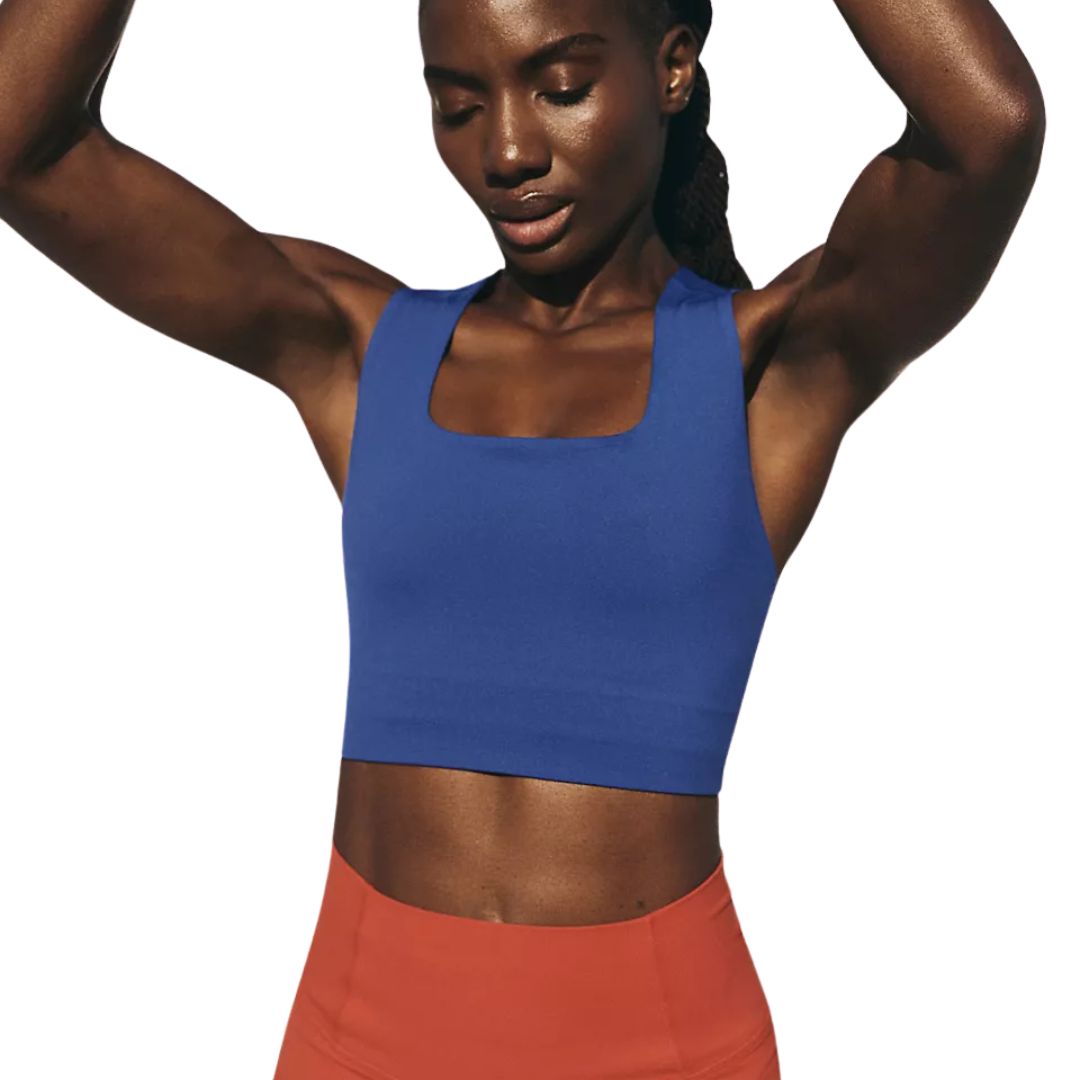I Tried Jeffing, the Wildly Viral Running Method, for a Month – and It Helped Me Run My Furthest Distance in Years
Think you can't run? Try this.
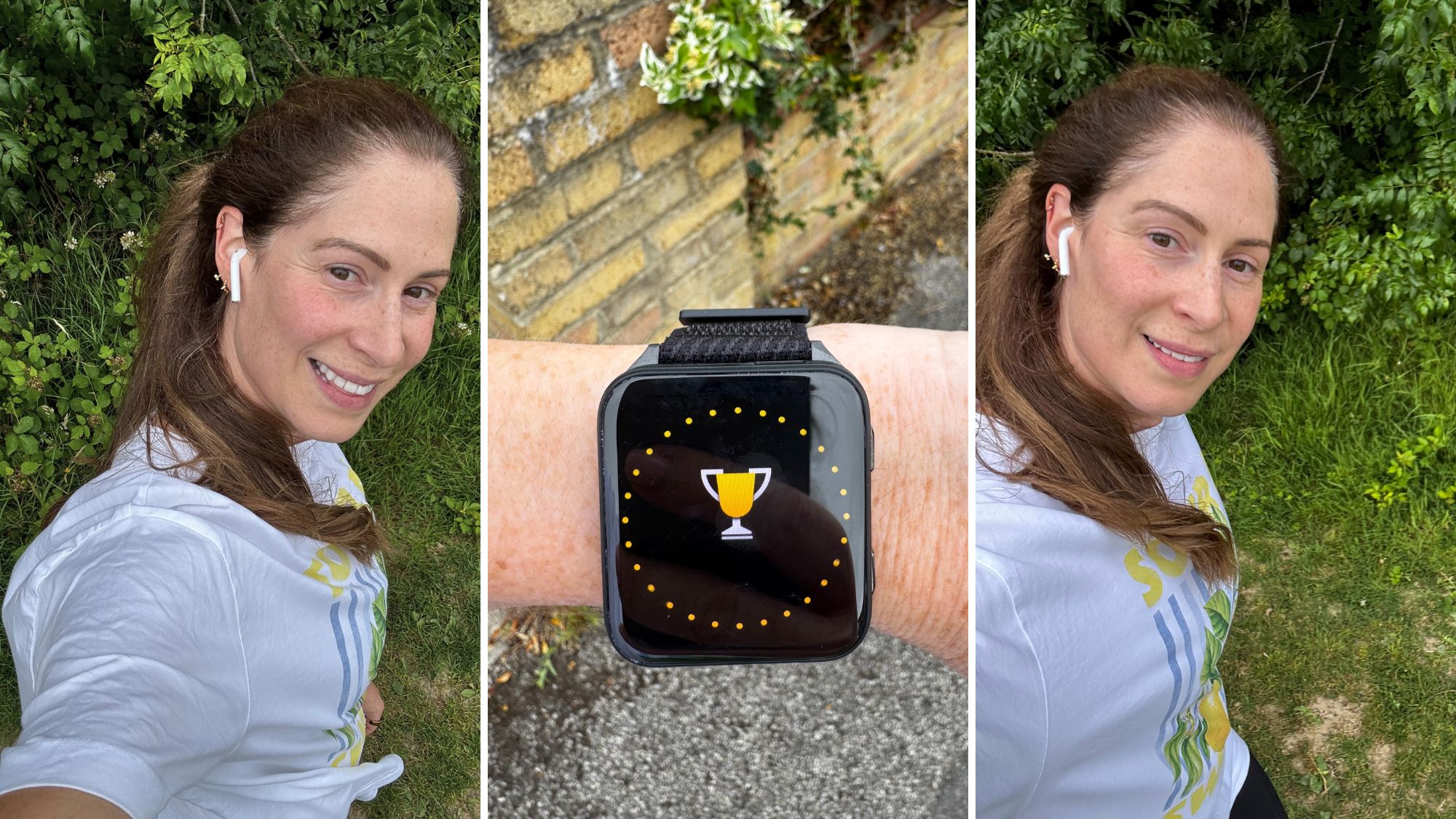

Despite running the Brighton Marathon back in 2019, for the past few years, I've struggled to run for longer than around half an hour at a time. Gone are the days when I'd lace up my trainers for at least an hour or more. While I feel stronger and fitter than ever, even a half an hour run can be a hard slog, at times.
I've put this down to a combination of hormones, tiredness, and not being as young as I once was, and, for the most part, I'm okay with it. But when MC UK's senior Health Editor, Ally, asked if I wanted to give a viral running hack a try, I was intrigued. Could a different approach revolutionise my favourite workout and help me regain my running mojo? I was keen to find out.
As for why I love it so much? You don't need me to tell you that running is great for both body and mind. In fact, research (including this 2014 study, from the Journal of the American College of Cardiology) shows 'leisure-time' running reduces our risk of all-cause and cardiovascular mortality, while studies into the mental health benefits of the exercise (such as this 2020 study, published in the International Journal of Environmental Research and Public Health) reveal positive indications for emotional wellbeing, in particular, anxiety and depression.
As for me, I'm already on board with the benefits, but I am keen to see if a more targeted technique would make my runs feel a little, well, easier. Keep scrolling to find out how I get on, but for more running advice and intel (much of which is written by Ally, who just happens to be a nine-time marathoner and a Boston Qualifying runner) do check out our guides to the best UK running races, the best running advice for beginners, tips for how to run a mile without stopping, and the best running shoes for women, here.
Jeffing has gone wildly viral - I tried the running technique to see if it could boost my speed and endurance
What is jeffing?
For the uninitiated, jeffing might sound a bit bizarre, but it's actually refreshingly straightforward.
"Jeffing is a run-walk training method, which basically involves alternating between periods of running and walking," explains personal trainer (and 10x marathoner, and ultra-runner: she knows a thing or two about running!) Emma Bord. "It is essentially an example of interval training, and it's an amazing way to progress from walking to running, especially for beginners or anyone returning to running after a break. And in fact, more experienced runners also use this format to improve their overall performance."
It's so simple, in fact, that you're probably already doing it. Unlike methods such as Japanese walking, which has a strict three-minute repetition, the intervals aren't a designated length in jeffing, meaning that any time you intersperse your job with some walking, you're jeffing.
Celebrity news, beauty, fashion advice, and fascinating features, delivered straight to your inbox!
Who invented jeffing?
So the method might be simple, but why the name, you might be asking. Well, that's also obvious, once you know the background.
"Jeffing was invented by (and named after) the American Olympian Jeff Galloway, who, after completing the 1972 Munich Olympics, started teaching beginner runners how to take up running and avoid injury," Bord expands. "This interval-training style was the concept he had devised. In actual fact, he found that on average, marathon runners using the walk-run method slashed thirteen or more minutes off their times, proof that the method can work wonders."
Why is jeffing so popular right now?
Jeffing is a term that's been bouncing around the running community (and by this, we mean anyone who runs, btw - no matter how fast or how far) pretty consistently lately, and we're here for it. But why the sudden interest in a method that's fairly old?
"While jeffing has been around for decades, it’s having a bit of a moment," agrees personal trainer Robyn Drummond. "There’s something refreshing about a method that embraces walking as a strategy, not a setback. For women who’ve felt put off by the pressure of running culture, the all-or-nothing mindset, the injury fears, the internalised guilt of 'slowing down', jeffing feels like permission and a method that works for people. I know that at times, even as a fitness professional, I've felt embarrassed to walk when out for a run."
What are the benefits of jeffing?
Whether you're an ultra-marathoner, a running novice or anything in between, jeffing can offer a myriad of benefits (we'd go so far as to say, it's our favourite running method.) Let's take a look at what you can expect.
1. It's inclusive and accessible
Our favourite benefit of jeffing has to be how inclusive it is. As touched on above, building periods of recovery into your run can help us overcome the mental stigma of the run/walk method, while being able to choose your interval timing means the method is suitable for everyone, no matter how long you've been running.
"The great thing about ‘jeffing’ is that it is suitable for all levels," agrees Bord. "So if you are a beginner, for example, you may start with 30 seconds of running followed by 30 seconds of walking, whereas a more advanced runner may look to do three minutes of running and one minute of walking."
2. It's gentler on the body
Compared to pounding the pavements in a steady-state run, jeffing places less stress on our joints, and the periods of recovery mean our cortisol levels are given a chance to settle down, too.
"Jeffing reduces impact on the joints, lowers the risk of overuse injuries, and improves recovery without drastically cutting into performance," notes personal trainer at OriGym, Abbie Watkins. "In fact, many people actually record faster race times using this method because they don’t burn out early."
Less stress and a faster run - where do we sign up?
3. It builds endurance
"Jeffing can help build running stamina and endurance," shares personal trainer and founder of MADE Wellness, Penny Weston. "By alternating between running and walking intervals, fatigue is reduced, meaning you can maintain the workout for longer. Over time, you'll gain fitness and endurance."
4. It boosts resilience and self-esteem
So much of running is about mental attitude and strength, and the stories we tell ourselves as we run. Jeffing is perfect for those of us working on our inner critic (just me?)
"Knowing there’s a break coming up can help reduce the mental pressure that often makes people give up on a run," agrees Drummond. "As such, it’s a great way to build confidence. The walking doesn’t interrupt the run; it's part of it. And for many women, that shift in mindset could be really helpful and lower the barrier to entry for exercise."
5.It improves overall fitness
Last but not least, jeffing is an excellent way to boost your cardiovascular health and improve overall fitness.
"The process of alternating running and walking will strengthen your physical stamina and cardiovascular strength even more than steady-state running, therefore improving your overall fitness," says Bord. "In turn, this will enable you to run for longer periods of time as you increase your endurance, which is why so many marathon runners adopt this method."
Put simply, the recovery periods help you to run harder during the intense intervals, increasing endurance and lengthening the amount of time you can run without feeling exhausted.
I tried jeffing, the viral running method, for two weeks - my honest take
Week one
I've followed a run/walk method for nearly every run since the marathon, so I've inadvertently been jeffing for years. That said, I'm really excited to get started on my jeffing challenge, and I head out on my usual 5k route pretty pumped.
And my initial thoughts are overwhelmingly positive: I love the gentle approach, and try out the classic 30-30 second timing for the first ten minutes of my run. Since I live on a hill and (whisper it) I'm usually really bad at remembering to warm up, usually I'm fairly puffed within ghte first few minutes of jogging, as my body screams at me to stop (this has always happened to me, FYI - even when I was running marathon distances!)
Not so, with jeffing. As soon as I feel my heart rate (and with it my anxiety levels) climbing, it's time to walk again - and I'm here for it. However, after the first 15 minutes, I morph into my usual steady-state pace, which I'm not entirely sure is what I'm supposed to be doing, but it feels good, so I go with it.
And that's kind of the point, I gather, as I do my research later that day in preparation for round two. "The key is to start your walk breaks before you feel like you need them," advises Drummond. "This is what separates jeffing from simply stopping to recover: it’s proactive, not reactive."
For my second run of the week (I don't run every day, as it's too taxing on my joints), I decided to push things just a little, as I realised I'd been following the beginner's protocol in run one. So, to ramp things up to an intermediate level, I try a three-minute run, one-minute walk pattern, which works really well for me until my fitness watch randomly switches itself off, mid-run. Not helpful!
However, I pivot and decide instead to time my runs (and breaks) according to my music. I figure that each track usually ladts around three minutes, so I try for a one song on/half a song off rotation, and it feels more intuitive - there's something about not having to check my watch all the time that feels freeing, and I settle into a comfortable and sustainable rhythm, which is always my sign of a successful run.
Week one is a resounding thumbs up from me: I feel energised and not asd depleted as normal after I finish both runs, and it's motivated me to lace up my trainers more than once a week, which can only be a good thing.
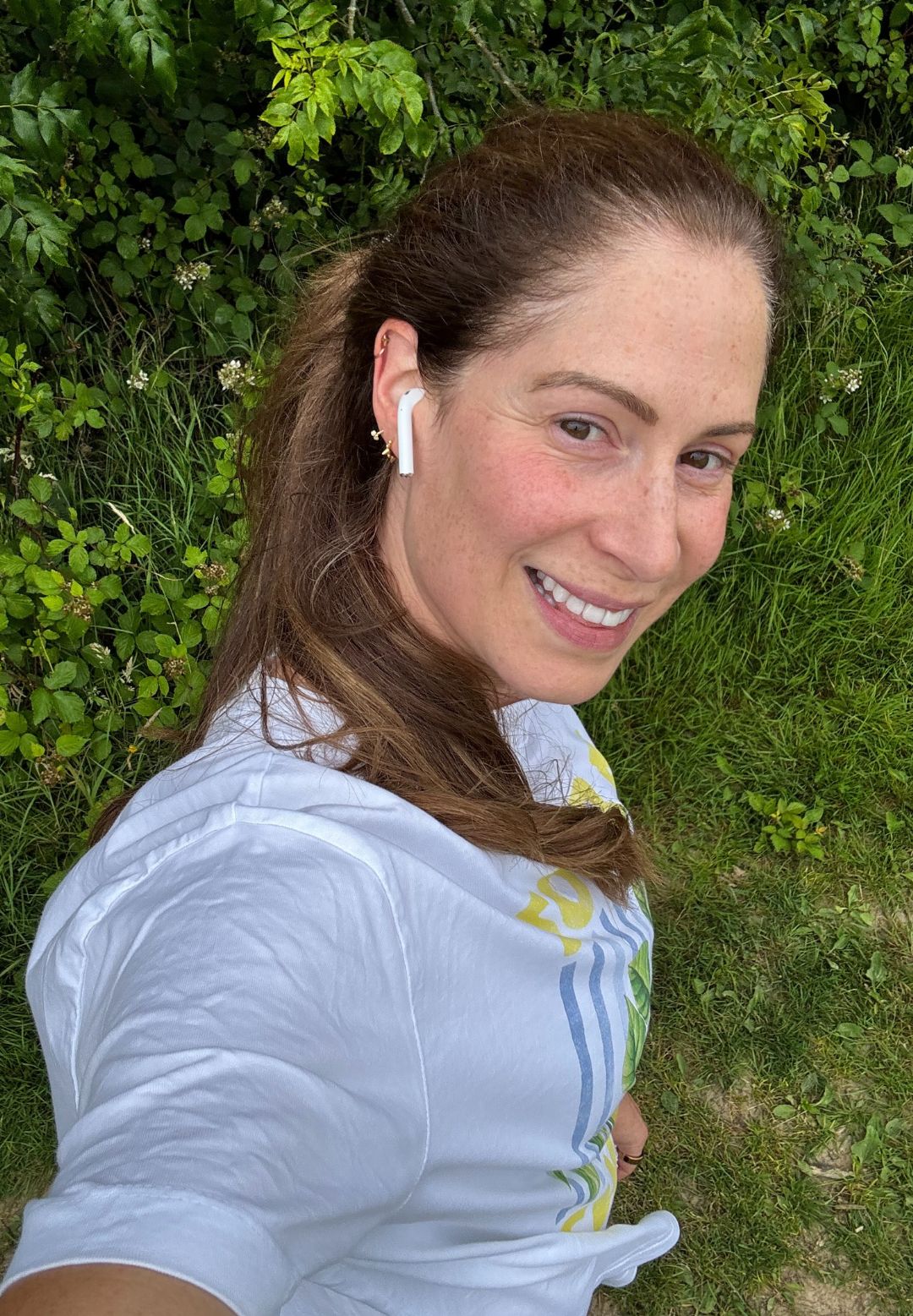
Anna during the first week of her jeffing challenge, in the park.
Week two
Week two, and I'm excited to find out if I've made any progress. Armed with my new running watch (the excitement levels are high), I feel like a kid waiting for their birthday - I can't wait to get outside and run. I do have to wait for a slightly cooler day, though, as the UK is experiencing a mini-heatwave that renders running outside brutal, and since I'm not training for an event, I choose not to push it.
So, when I finally manage to set out, I decide to see if I can build on last week's positivity. Rather than taking the whole run at a comfortable pace, I try to run at a 'push pace' for two minutes, then walk for one. For the uninitiated, a push pace is essentially a speed at which you'd struggle to talk, but it's not so fast that you're running flat out. In all honesty, while I might (occasionally) bemoan my lack of running progress, the truth is that I don't really do anything to improve it, and I know that running just a bit faster, for a bit longer, will likely do me the world of good.
And because I know the effort is short-lived, I'm able to do it, without giving up and feeling as if I've failed. Maybe there's something in this Jeffing lark, after all. Far from slowing me down, as I originally suspected it would, the running method actually helped me to my fastest 5k time for a good while. And even though I'm not heavy into stats, I can't help but feel a little smug as I share a snap of my watch with my running mates.
This slowing down to speed up idea is kind of the whole point, too. "In a fitness world obsessed with intensity, jeffing reminds us that sometimes slowing down is the smartest way to move forward," agrees Drummond. "Whether you're training for a race or just trying to get out the door, jeffing offers a more compassionate and sustainable approach, and it's worth a try."
As for the gains I've noticed, aside from my speed, I do hit an 8k, which I haven't run for a couple of years (mainly due to time constraints, and an intentional stepping back from stats and figures, which used to stress me out). Most of all, though, I've really enjoyed running again. Knowing it's ok to walk, and taking the pressure off myself to be perfect, has reignited my passion for the sport and helped me to tune back into how my body is feeling.
Fitness-wise, two weeks may not be enough to yield any significant gains, but I certainly haven't lost any form. I know that so much of my performance is tied to where I am in my cycle, how well I've slept, my mental approach on any given day and more, so I can't say with any certainty that my jeffing trial has definitely contributed to my faster time and longer run - but whatever the cause, I'm taking it.
Will I continue with jeffing? Absolutely: I'm a convert. I feel excited and capable about my running, for the first time in a long time, and I can't ask for much more than that. In the words of the meme currently doing the rounds, I almost forgot that this is the whole point.
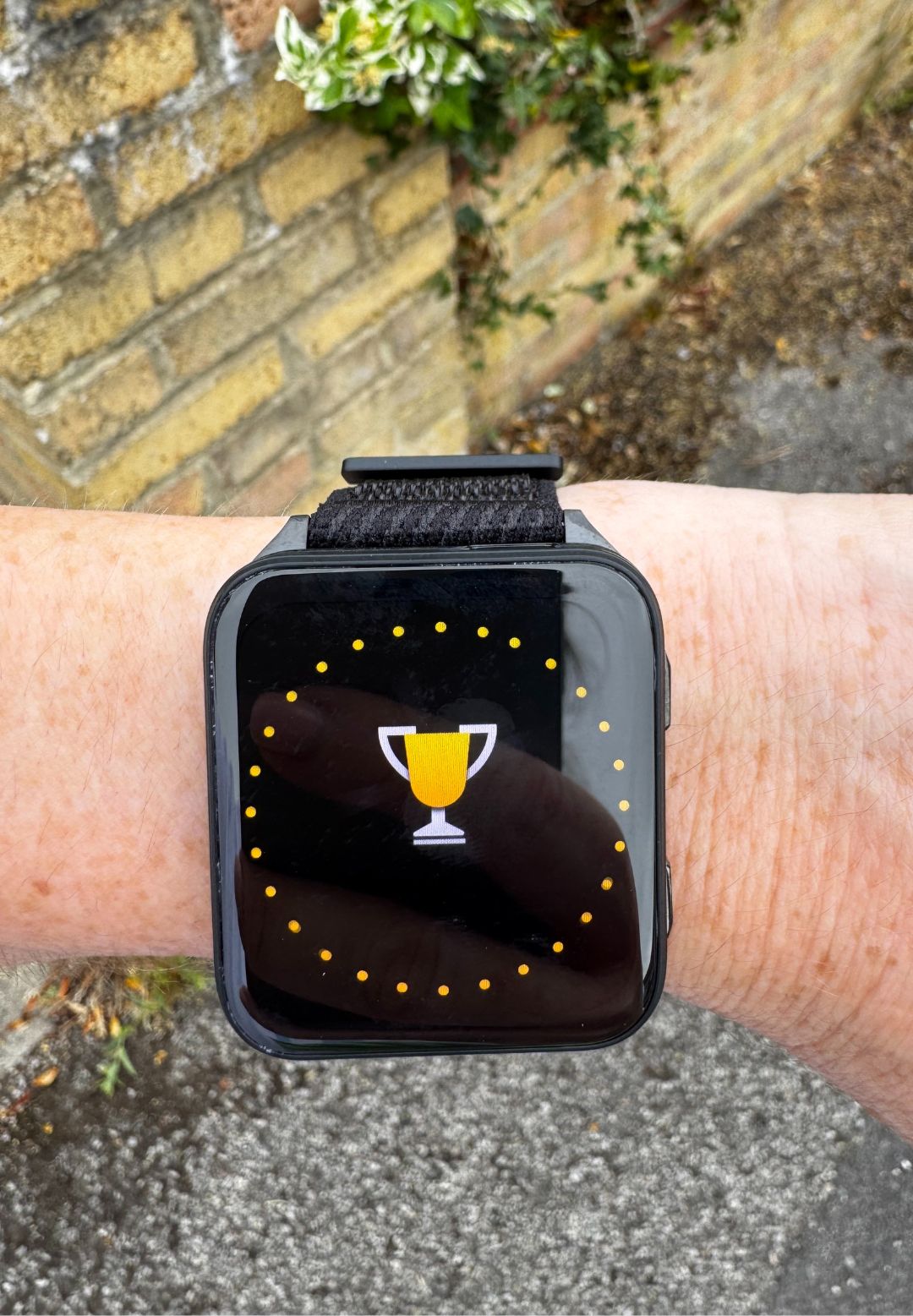
Anna's fitness tracker during her jeffing challenge, showing that she hit personal bests
Shop MC UK's tried and tested running kit now:
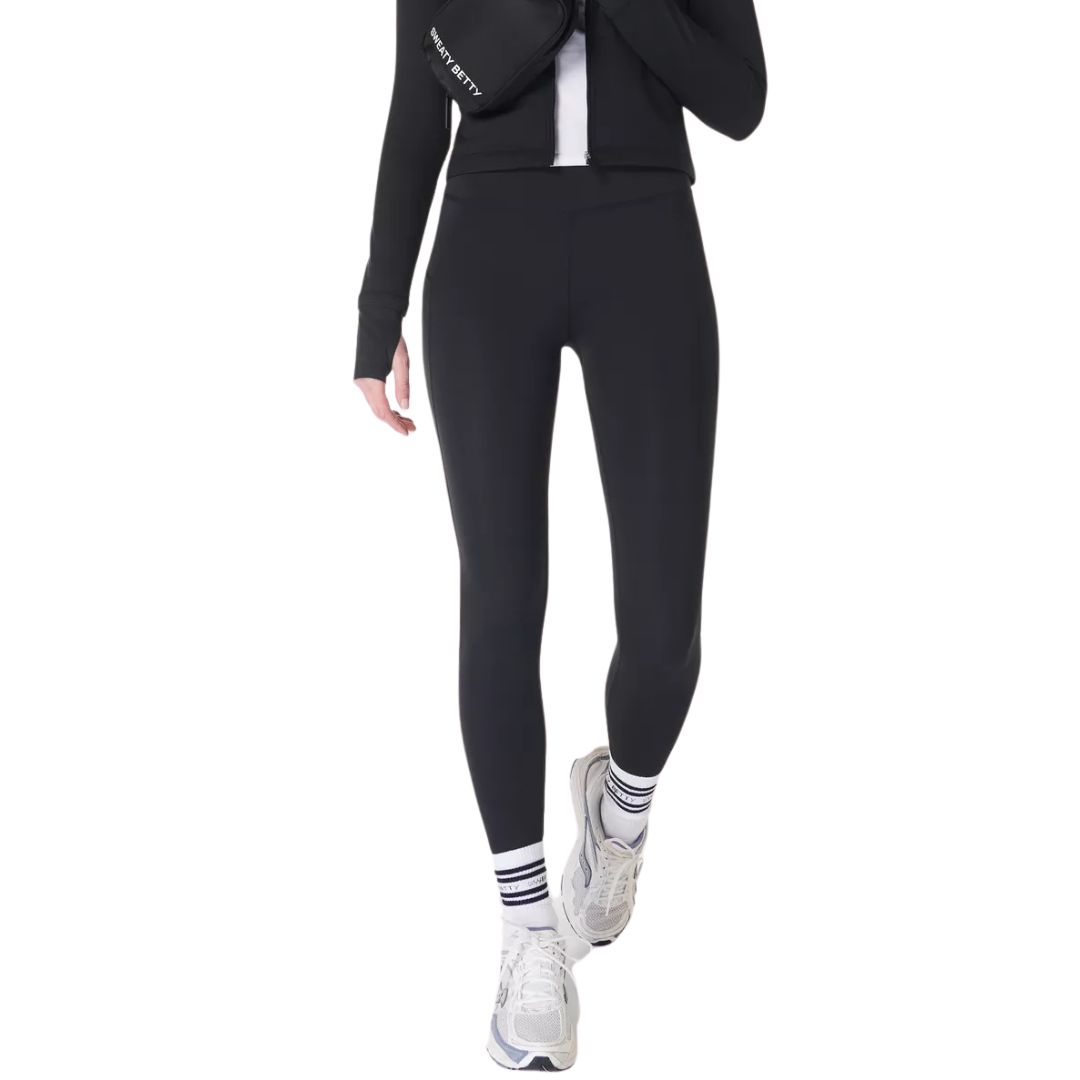
Between us, Team MC UK have tried countless pairs of leggings - but the Sweaty Betty Powers are the ones I keep coming back to for running. They stay put (no mid-run hoiking required) and they're supremely comfortable, not to mention available in an astonishing 58 colours and designs.
How do I know how long my running interval should be?
This is the million-dollar question, and one I struggled to get right initially. Bord recommends the following general guidelines:
- Beginners: 30 seconds running, 30 seconds walking
- Intermediate: 3 minutes running, 1 minute walking
- Advanced: 1km running, 1 minute walking
"For more advanced runners, you may wish to really go out hard on the running intervals," she tells MC UK. "You could try perhaps faster than your normal pace before your walking recovery; this will absolutely increase your fitness levels and make your race pace feel more comfortable."
Basically, anything goes: play around until you find a ratio that works for you.

Anna Bartter is a freelance journalist who writes about health, fitness and women's lifestyle for publications including Stylist, Metro and Psychologies, among others.
She's always on a quest to find a variety of fun and functional workouts that give you the most bang for your workout buck and she's passionate about championing movement for everyone's mental and physical wellbeing.
